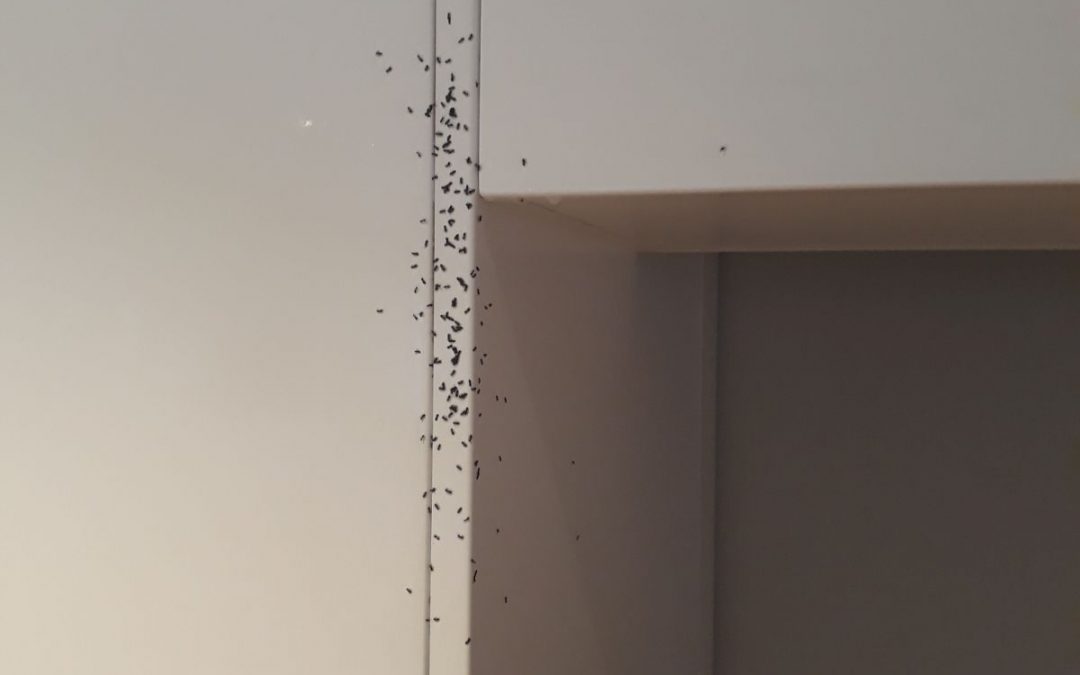As the days become longer and you transition back to layering clothing rather than donning thick sweaters and coats, the pests come out to play. There’s nothing worse than preparing for a great spring and summer, only to have your plans foiled by tiny bugs in your home. As the days grow warmer, it’s important for you to protect yourself by keeping the pests at bay. Rats, bed bugs, and fleas thrive during winter, however the bugs that sting and bite come out during spring and summer. This is why mitigating risk with these pest control tips are important.
The spring and summer pests that you have to look out for are ants, flies, hornets, bees, wasps, mosquitoes, termites and ticks.
We want you to make the most of your spring and summer and not have to worry about pest infestations. So with that in mind, take a look at these preventative measures around the house:
Spring & Summer Pest Control Tips
In terms of pest control tips, here are a few common areas of the home where it is important to take preventive measures against pests:
1 – Roof
If your roof is leaking or has been damaged over the winter, be sure to get it fixed. Replace any damaged tiles, close off all the cracks with roofing cement and make sure all the drain pipes are clear. Don’t forget to check the overhang for any nests!
2 – Air Vents
Your air vents are one of your home’s vulnerabilities. To keep termites, wasps, and other such insects out, invest in mesh air-brick ventilation covers.
3 – Attic
Attics are common places to find pest nests. This is particularly likely if yours is dark, messy, and unused. Your wooden beams, cardboard boxes and stored possessions can all become sources of food if you don’t take care of them properly. Pack your things away in cardboard boxes and make sure you conduct regular inspections of your wooden beams to make sure you don’t have any termite infestations. All you’ve got to do is press different areas of the wood and make sure it feels firm – if it’s soft and spongy, you’ve got a problem.
4 – Bedroom
Another popular place that pests target are bedrooms. To keep your bedroom from being visited by pests, make sure you keep your windows and doors shut when you aren’t airing out the room. Make sure there are spaces between your furniture and the walls. Carry out regular inspections of any wooden beams and other areas where termites may decide to make their home. Take a closer look at your bedding or the structure of your bed frame or bed base to ensure no bed bugs have settled in. Wash your bedding with hot water (at least 60 degrees Celsius or 140 degrees Fahrenheit) to kill any bugs and bacteria, and remember to vacuum regularly.
5 – Windows
A lot of insects find that the easiest way to infiltrate your home is via the window. Therefore, be sure to keep them closed during swarming periods. If you want to enjoy the air outdoors, consider installing insect screens.
6 – Garden
Your garden can become pest central if you don’t take measures to protect it. By draining standing water, removing tree stumps and dead branches, as well as making sure stacks of wood aren’t near your home, you can reduce the number of hiding spots that pests may choose. Also, by minimizing shrubbery and vegetation, opting out of wood mulch, sealing patio cracks and storing compost in a secure bin, you can minimize it further.
7 – Garage
Garages are also common places that pests choose to hide. It usually isn’t checked as often and as thoroughly as the rest of your house, so infestations usually go a long time without being identified. Remember to conduct regular checks of the corners and nooks for nests, as well as repairing any damage and sealing any cracks. You should also ensure that the garage is dry, and things are stored neatly in plastic containers.
Well, that’s it for our summer and spring pest control tips. If you’ve taken these measures, you can greatly reduce the chances of having to deal with unwanted pest infestations. Want to protect yourself further and ensure your summer/spring remains pest-free? Click here to contact us for a consultation and guidance on the preventive measures you should take specifically for your home.

